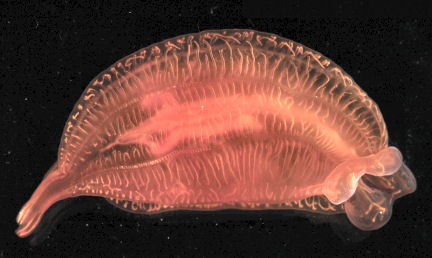Amorphous, gutless, and brainless, simple sponges were the first multicellular animals. That’s what scientists have said for a century. Now a team of biologists suggests demoting sponges and placing comb jellies at the base of a new tree of animal life.

These gelatinous marine predators, including Aulacoctena acuminata pictured here, have more cell types and organs than the sedentary and filter-feeding sponges. Casey Dunn doesn’t think the new placement is preposterous, though other biologists might. “It’s a problem when people think that evolution marches toward increased complexity,” says Dunn, the project’s lead researcher who is now at Brown University in Providence, R.I. The new tree, based on a comparison of 150 genes from a plethora of animals, is described in a report online and in an upcoming Nature.






